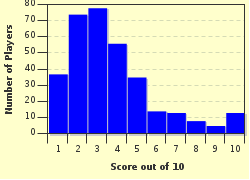Quiz Answer Key and Fun Facts
1. Frank Sinatra´s megahit "My Way" had English lyrics added to a tune that had already charted, but in which country?
2. "Pop Goes The Weasel" is a popular nursery rhyme. What is meant by "Pop"?
3. The Beatles' song "Penny Lane" describes the day-to-day activity in a street full of colourful characters. Did Lennon and McCartney invent the street?
4. We all know the Ralph McTell folk classic whose chorus begins "So how can you tell me you´re lonely...". Which city's down-and-out inhabitants inspired him to write it?
5. The teenagers seen singing on the video accompanying Pink Floyd's "Another Brick In The Wall" are not in fact those who are heard. Why?
6. The iconic "You´ll Never Walk Alone" was first sung to give courage to whom?
7. The bluebirds referred to in the song "There'll Be Bluebirds Over The White Cliffs Of Dover", popular during World War 2, originally intended to signify the blue uniform worn by RAF crew.
8. About which city was the song "Dirty Old Town" written?
9. Elvis Presley had his first number one hit with "Heartbreak Hotel", but what was the original inspiration for the song?
10. British jazz icon Acker Bilk initially recorded "Stranger On The Shore" for use as the theme music for a children's television series of the same name.
Source: Author
simjazzbeer
This quiz was reviewed by FunTrivia editor
agony before going online.
Any errors found in FunTrivia content are routinely corrected through our feedback system.

